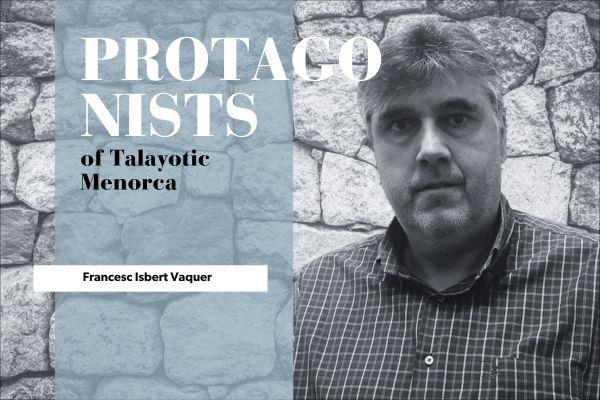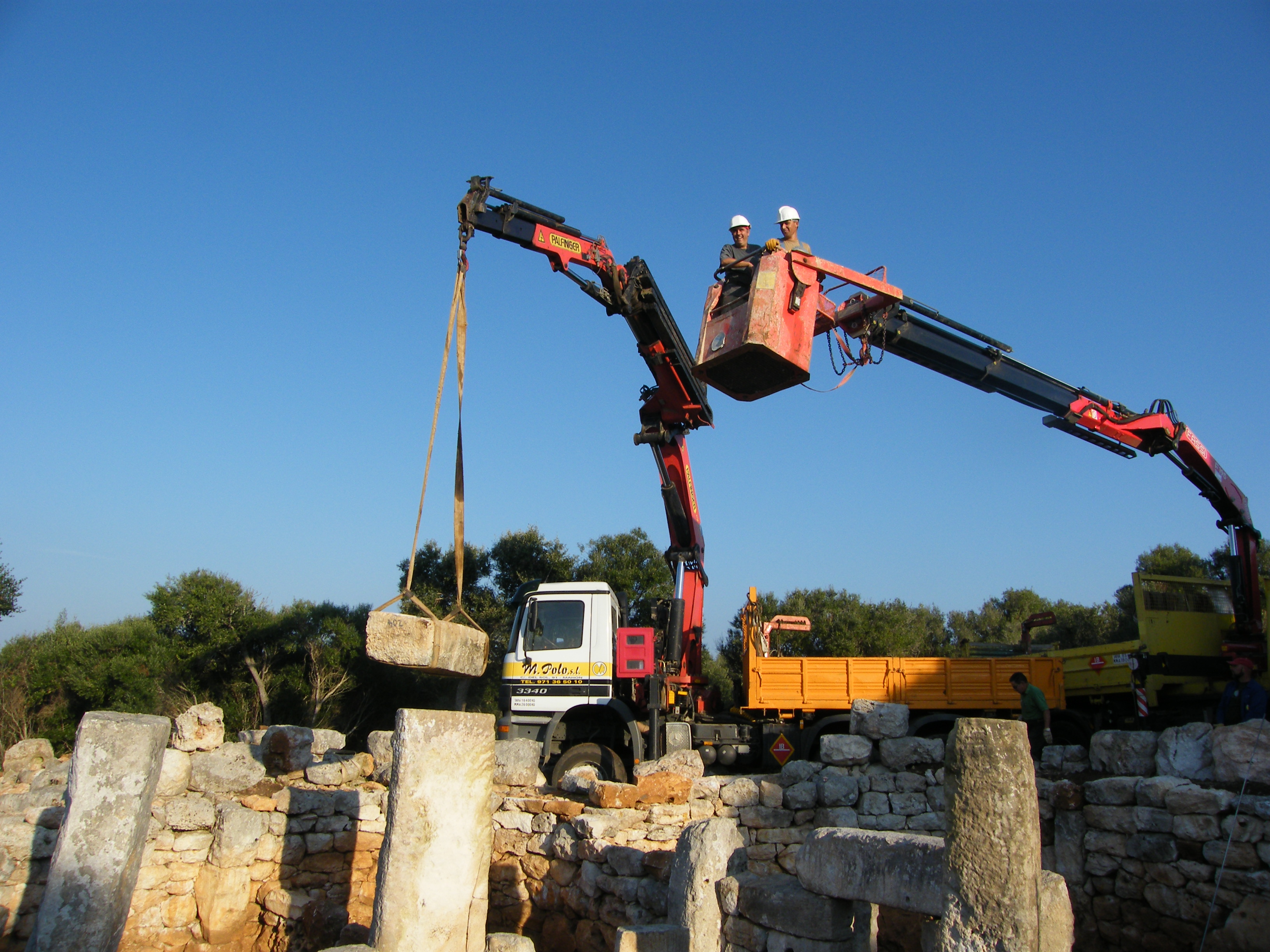
Francesc Isbert Vaquer holds a degree in Fine Arts, specialising in Restoration from the University of Barcelona (1988). Born in Montuïri (Mallorca), he carries out his professional activity in the field of safeguarding and studying Menorcan artistic heritage, painting, sculpture and movable goods in general, with special dedication to archaeological restoration. He has participated in and directed several projects in Torre d'en Galmés, Trepucó, Binisafullet, Biniai Nou, Son Catlar, Talatí, Montefí, Torralba d'en Salort, Morella, Naveta des Tudons and Torrellissar.
A member of the Institut Menorquí d'Estudis and the association of Amics del Museu de Menorca, he has also formed part of the commission that promoted the candidacy of Talayotic Menorca as a UNESCO World Heritage Site. In 2019 he received the Order of Civil Merit for his personal commitment and social contribution.
What prompted you to dedicate yourself to heritage restoration and conservation?
You could say it was an unforeseen event. I was studying Fine Arts in Barcelona with the idea of doing sculpture, but a disagreement with a professor of this subject made me change my initial plans. After making contact with all the specialities at the faculty, I decided to go into restoration.
And what attracted you to the study of Menorcan Talayotic culture?
It was all a coincidence. I finished my Fine Arts degree in 1988, but in the summer of the previous year I had worked as an intern in Mallorca restoring archaeological material from an excavation in Sa Mesquida (Calvià), under the direction of Margarita Orfila. It turned out that in the summer a congress on early Christian archaeology was held in Maó, in which Margarita Orfila also participated, and the management of the Museu de Menorca asked her if she knew of any restorer to cover a three-month contract that the Balearic Government's Department of Culture had announced. She said she knew someone who had finished his degree; I started on October 1, and have been working there ever since. The fact of having worked for almost twenty years in the museum with most of the Talayotic material on display today, as well as participating in excavations and projects, whether you like it or not, created a bond with everything related to Menorcan Talayotic culture that continues to this day.
 In your extensive career as a restorer, you have worked "in situ" on archaeological sites and monuments all over Menorca. Which are the ones that have had the greatest impact on you or have been a turning point in your career?
In your extensive career as a restorer, you have worked "in situ" on archaeological sites and monuments all over Menorca. Which are the ones that have had the greatest impact on you or have been a turning point in your career?
Each intervention is a challenge, because although in general everything is "stones", each site and monument is unique, each one with its own problems. But if I had to choose one of them, it would be the restoration and raising of the Binissafullet taula, and the raising and restoration of the Cartailhac circle at the Galmés tower site.
The taula because it was the first intervention on a monument of these characteristics that I carried out in Menorca and which involved raising the only taula to date outside of those raised in the Talayotic period. The Cartailhac circle because it is a very spectacular Talayotic habitat that before the excavation was just a large pile of stones and, in the end, the result was the most spectacular and best preserved circle in Menorca.
What projects are you currently involved in?
Every summer I participate as co-director in the Amics del Museu de Menorca excavation of the north house of Torre d'en Galmés, coordinating the conservation and restoration of the structures and the archaeological material that may come out, as well as the restoration students who also participate. The last intervention I directed was the restoration of the naveta of Torrellissar Vell, which was in danger of collapsing.
You have been closely involved in the different stages of the preparation of Menorca's candidacy for World Heritage status. How have you experienced the whole process?
I think that everyone who has participated has contributed what they could within their reach, living it with intensity and as a challenge, especially when the candidacy was withdrawn; although it was a setback, the island's administrations continued and rebuilt themselves to finally achieve the award of the Talayotic Menorca as World Heritage.
With your experience as a restorer and in the field of conservation, what challenges do you see for Talayotic Menorca now that it is a World Heritage Site?
The range of challenges can be very wide and, in the case of Menorca, it is even greater due to the large number of sites and monuments. To list just a few, I would highlight the need to make some of the lesser-known sites that are off the tourist routes more suitable for visits, conservation and maintenance, planning new excavations and maintaining those already programmed...